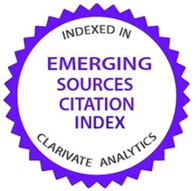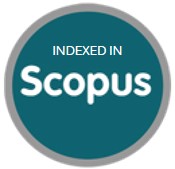La mística de Napoleón y los poetas Británicos
DOI:
https://doi.org/10.21830/19006586.382Palabras clave:
guerra; mística; morbosidad; Napoleón; poetas románticos; posguerraResumen
Esta reflexión sobre la influencia de Napoleón y las consecuencias de las guerras en los principales poetas británicos de la época romántica pretende ilustrar cómo se registran las reacciones de la nobleza y los plebeyos en la literatura y los medios de comunicación. La percepción dual de Napoleón como héroe y tirano y el sufrimiento atroz de los que no estaban en el campo de batalla y las sangrientas batallas se manifiestan en las obras de los principales poetas como William Wordsworth, Samuel Taylor Coleridge, Percy Bysshe Shelley y especialmente George Gordon, Lord Byron. Napoleón trasciende una definición precisa –incluso hoy– y ha inspirado a algunos de los mejores poetas de la literatura británica
Descargas
Referencias bibliográficas
Bainbridge, S. (2016), Romanticism and War; Oxford Handbooks Online; Jun2016, DOI:10.1093/osfordhb/9780199935338.013.111, retrieved from www.oxfordhandbooks.com/view/10.1093/oxfordhb-9780199935338.013.111 on July 25, 2017.
Blake, W. (1794) London, Songs of Experience. retrieved from https://poemanalysis.com/fears-in-solitude-
by-samuel-taylor-coleridge-poem-analysis/ in November 2018.
Bloom, H. (1960), Napoleon and Prometheus: The Romantic Myth of Organic Energy; Yale University Press,
DOI: 10.2307/2929227, Stable URL:hhtp://www.jestor.org/stable/2929227 in October, 2017.
Bloom, H. (1971), The Visionary Company, A Reading of English Romantic Poetry; Cornell Univrsity Press, Sage
House, 512 East State Street, Ithaca, New York 14850.
Burns, R. (1785) Adventures in English Literature, Pegasus Edition, To a Mouse, stanza 7, p. 440) Adventures in English Literature¸ Pegasus Edition (1989); Harcourt Brace Jovanovich; Publishers, Orlando, Florida32
Burwick, F. (n.d.), 18 June 1815: The Battle of Waterloo and the Literary Response; BRANCH:Britain, Representation and Nineteenth-Century History. Ed. Dino Franco Felluga. Extension of Romanticism
and Victorianism on the Net. Web. Retrieved from http://www.branchcollective.org/?ps_articles=fredrick-burwick-18-june-the–battle- of-waterloo-and-the-literary-response on February 5, 2018.
Clubbe, J. (1997), Between Emperor and Exile: Byron and Napoleon; The International Napoleonic Society,
Napoleonic Scholarship: The Journal of the International Society, volume 1.Number 1, April, 1997 retrieved from http://www.napoleon-series.org/ins/scholarship97/c_byron.htnl, on August 11, 2017.
Cochran, P. (n.d.), Byron’s Napoleonic Poems; retrieved from http://petercochran.files.wordpress.com/.../napoleonicpoems.pdf on February 1, 2018.
Coleridge, S.T. ( ) Fears in Solitude, retrieved from https://poemanalysis.com/fears-in-solitude-by-samuel-taylor-coleridge-poem-analysis/ in November 2018.
Hazlitt, W. (1825), The Spirit of the Age; retrieved from http://www.blupete.com/Literature/Essays/Hazlitt/SpiritAge/Byron.htm on January 22, 2014.
Menteshashvili, I. (2010), The Great Romantics: Napoleon in Lord Byron’s Poetry; retrieved from www.napoleanicsociety.com/English/pdf/j2010ivane.pdf on July 28, 2017.
Pears, I (1992), The Gentleman and the Hero: Wellington and Napoleon in the Nineteenth Century, chapter 12. In K. Grint (Ed.) Leadership, Classical, Contemporary, and Critical Approaches, pp. 231-249; Oxford
University Press, Great Clarendon Street, Oxford ox2 6df.
Pinto, V.de Sola, editor,(1963) Byron’s Poems, vol. III, Every Man´s Library, Dent and sons Ltd. Aldine House, Bedford St, London.
Shaw, P. (2014), Child Harold’s Pilgrimage, Lord Byron and the Battle of Waterloo; retrieved from http://www.
bl.uk/.../romantics-and-victorians/articles/child-harlod’s-pilgrimage-lord-byron-and-the-battle-of-waterloo on August 2, 2018.
Stock, P. (2006) Imposing on Napoleon: the Romantic appropriation of Bonaparte; Journal of European Studies
(2012), 36 (3).pp.363-388-ISSN0047-2441 DOI: 10.1177/0047244106071069, retrieved from http://eprints.Ise.ac.uk/29371/ on January 24, 2018.
Woods, A. (2003), British poets and the French Revolution. Part Three: Byron- “Mad, bad, and dangerous to know; retrieved from http://www.marxist.com/british-poets-french-revolution on August 3, 2017.
Wynberg, A. (n.d.), The Eve of Waterloo, Lord Byron; retrieved from wynbergallen.com/document/the%20eve%20of%20waterloo.pdf. on February 5, 2018.
Descargas
Publicado
Cómo citar
Número
Sección

| Estadísticas de artículo | |
|---|---|
| Vistas de resúmenes | |
| Vistas de PDF | |
| Descargas de PDF | |
| Vistas de HTML | |
| Otras vistas | |
























